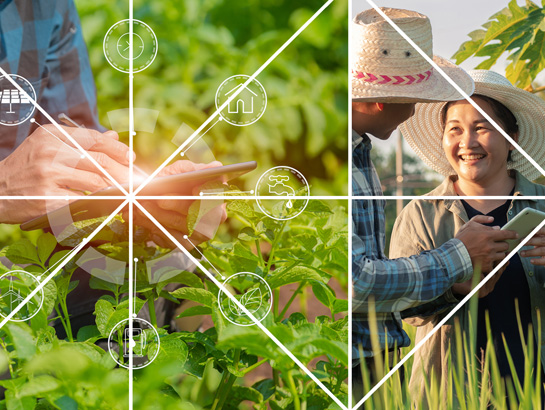For countries to reap the nutritional benefits of biofortified seed, the resulting biofortified foods must reach the hands of consumers. Digital tools are strategic assets now being used to scale up the reach of biofortified seeds, grains, and foods.
A new brief, “Digital Transformation for More Nutritious Food Systems,” outlines how digital tools can be used to commercialize nutrient-enriched staple crops. Examples of how digitization has enabled businesses and partners to commercialize and scale up biofortification along the supply chain are included.
Digital tools are increasing productivity, bringing profit to farmers and supply chain actors, and stimulating food system transformation. They help dismantle barriers to scaling, especially end-to-end traceability systems that ensure the nutrient content from seed to food, for example.
“Advances in digital tools are rapidly expanding opportunities all along the value chain for biofortified foods,” said Lynn Brown, HarvestPlus Director of Policy, Strategy, and the Africa Region. “They are delivering real benefits to low-income smallholder farmers, connecting them to food businesses and ensuring that more nutritious foods appear on the plates of consumers.”
In other ways, digitizing agricultural advisory services has revolutionized the number of farmers HarvestPlus can reach with agronomic and nutrition information, and where we reach them. Rural, and otherwise isolated communities are no longer out of reach.
By adopting more digital tools in our programming, HarvestPlus and its partners are bringing biofortification and its related technologies to groups most at risk of missing out on advancements in agriculture, including women, low-income consumers, and food businesses that serve populations living on mere dollars a day.
Many biofortification digitization projects are underway across Africa and Asia. They range from using satellites for crop monitoring, to using data and artificial intelligence for the predictive modeling of health and economic impacts.
This digitization approach is being applied across all HarvestPlus activities and digital projects are researched, monitored, and reported as part of the CGIAR Digital Innovation Initiative.
HarvestPlus began using digital technology to commercialize biofortified commodities in 2017. Market players were attracted to the prospect of using new tools to do their work more effectively and with greater potential impact. Then, when COVID-19 ensued and projects had to be delivered without face-to-face contact, use of digital tools soared.
HarvestPlus now works with multiple private sector service providers who provide cost-effective commercial solutions (such as software programs, mobile applications, and live data collection tools) to participants along the supply chain. This strategy—which links farmers, aggregators, food businesses, retailers, and consumers—is responsive to the needs of businesses and is a sustainable, market-based approach to utilizing digital tools without the need for ongoing donor investment.
